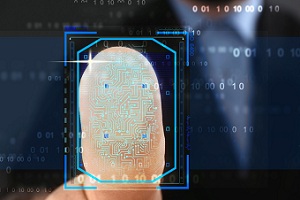According to a new report from ABI Research, the global outbreak of COVID-19 is expected to result in a significant reduction in the shipment of contact biometric devices, resulting in a drop of $2 billion in revenue throughout 2020. Conversely, the market research predicts that investments in facial recognition technology, particularly those powered by artificial intelligence (AI) algorithms, will surge.
“Contact biometric technologies like fingerprint and vein have been dealt a substantial blow due to new governmental regulations targeting contact and close-proximity interactions. Fingerprint biometrics vendors are struggling to uphold the new stringent hygiene and infectious control protocols. These regulations have been correctly introduced for the safety of users and personnel, but they have also affected sales in certain verticals,” Dimitrios Pavlakis, Digital Security Analyst at ABI Research, said in a statement. “On-premises physical access control, user registration, identification, and workforce management systems have been greatly affected in the enterprise and commercial space, but these applications also spread into healthcare, law enforcement, border control, government, civil, and welfare.”
According to ABI, the total biometric device market is expected to reach $28.2 billion in 2020, with the government and security market taking a hit of $1.1 billion. Fingerprint device sales are also expected to decrease in 2020 by $1.2 billion. Not all is bleak, however, according to Pavlakis.
“AI biometric firms are adapting to the biological threat. Biometric technologies are currently undergoing a forced evolution rather than an organic one, with artificial intelligence biometric firms spearheading the charge,” Pavlakis added. “New IoT and smart city-focused applications will enable new data streams and analytics, monitoring infection rates in real-time, forcing new data-sharing initiatives, and even applying behavioral AI models to predict future outbreaks.”
Additionally, the research firm said that face and iris recognition have emerged as key technologies allowing authentication, identification, and surveillance operations for users and citizens wearing protective headgear, face masks, or, with partially covered faces. These elements, which used to be the bane of face recognition algorithms in the past, have now been integrated into algorithm developers’ value propositions.








